Acle
|
An attractive market town situated at the gateway to the northern Broads |
|
 Acle
Acle is an attractive market town, situated beside the lower reaches of the River Bure. The traditional character of the town has not been lost and a market is still held here (every Thursday am and a farmers market every 2nd Saturday in the month). Acle means "a clearing in an oak forest" and in Tudor times, hundreds of oak trees were felled here for timber to construct warships. In Roman times Acle was an important port on a giant estuary, when Great Yarmouth did not even exist and all the area between Acle and Yarmouth was under the sea! In 1086 when the Normans arrived, the Domesday book records that Acle had 23 villagers, 38 smallholder's and 3 slaves! In 1101 Acle bridge was opened as the port began to gradually silt up and the river Bure was formed. Despite the decline of the port, Acle continued to be an important trade centre, with regular markets since the 13th century, with livestock sales being a central part of it. Today, Acle has grown to a population of about 2,700, attracted by its friendly character and the fact that it sits conveniently midway between Norwich and Great Yarmouth. To the visitor, Acle has much to offer, from plenty of facilities to glimpses of its historic past. |
|
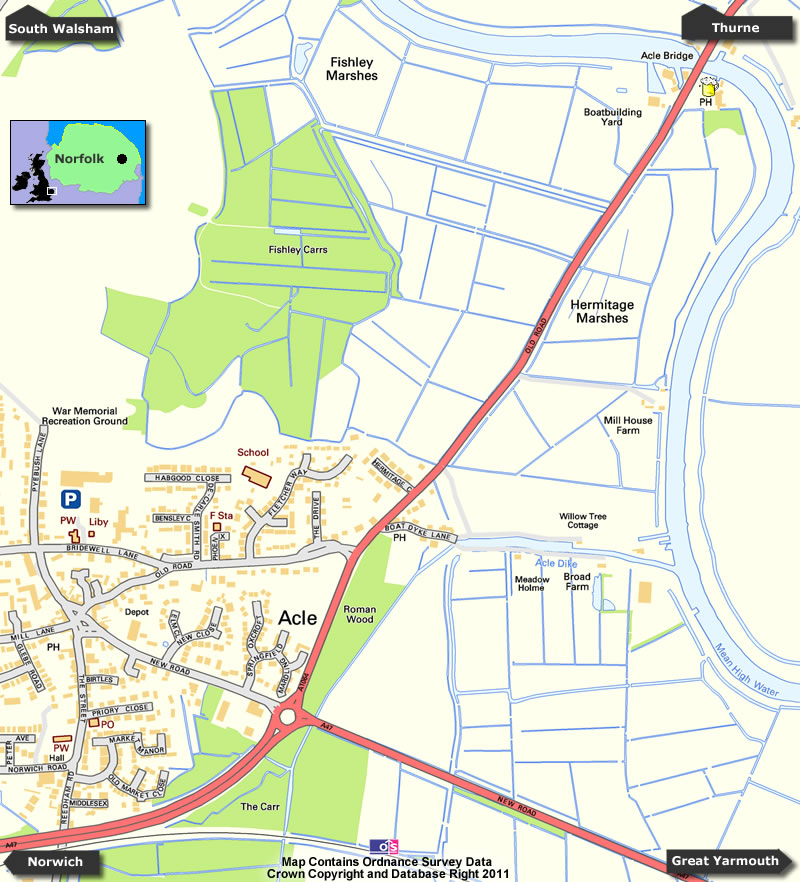
|
|
| |
|
We start our tour of Acle at the nearby bridge over the River Bure. Several bridges have stood on this site with the first reference to a river crossing back in 1101. Until its replacement in 1931, Acle bridge was a three arch stone bridge with two piers supported on oak piles driven into the river bed and built in the 1830s. The three narrow arches would have proved a barrier to any vessel other than keels and wherries. A single-span concrete bridge built in 1931 was subsequently replaced by the current bridge in 1997 due to the increase of road traffic volume and heavier loads carried, plus the bridge was showing signs of subsidence. Adjacent is a couple of boatyards hiring cruisers to visitors and " The Bridge" public house. |
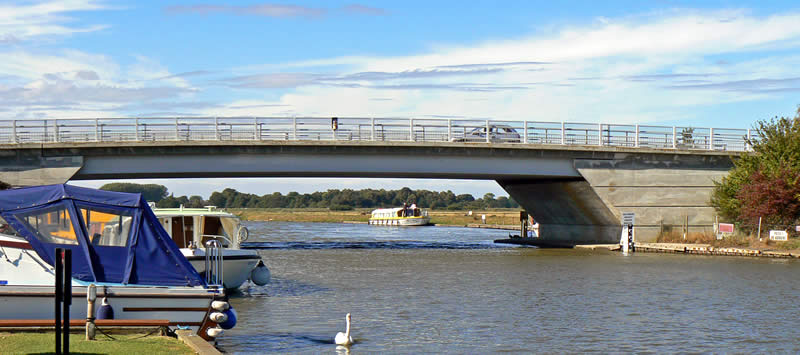
The modern Acle Bridge, built in 1997 |
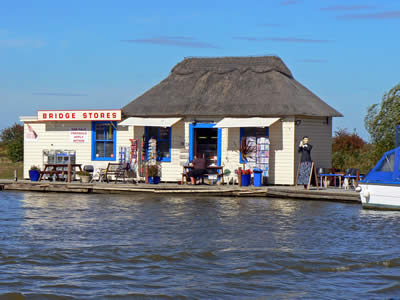
Acle Bridge Stores, adjacent to the bridge |
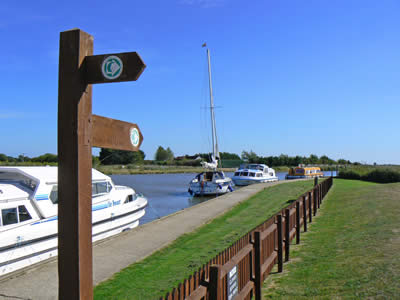
Weavers Way footpath along the River Bure near Acle Bridge |
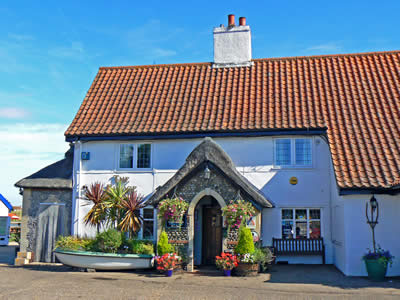
The Bridge pub at Acle |
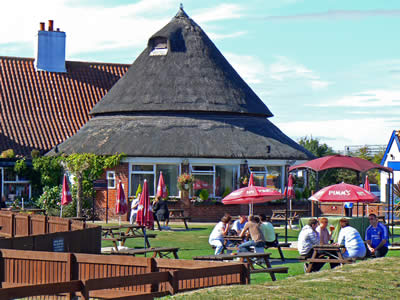
The pub garden overlooking the river |
 Acle Bridge is the setting of a famous ghost story Acle Bridge is the setting of a famous ghost story, which tells of a pool of blood appearing on the bridge every 7th April. The story relates to a local businessman, called John Burge, who cheated his customers, beat his wife and starved his children. One day, in yet another fit of rage, John beat his wife to death. At his trial, he bribed the local doctor and was acquitted of murder. However, is wife's brother knew the real story and on the 7th April he took revenge by cutting Burge's throat from ear to ear on Acle bridge. The story then took a twist, when an innocent local man, Jack Ketch was accused, convicted and then hanged for John Burge's murder. Some time later, the brother returned and was horrified to learn of the innocent man's death. On the anniversary of his revenge murder of John Burge, the brother visited Acle Bridge to reflect on his actions. As he peered into the water, legend tells of a horrendous twisted figure appearing out of the mist. The next morning the brother was found dead in a large pool of blood on the bridge, his throat cut from side to side. Whether it is the blood of John Burge or his wife's brother, that appears every April 7th is unclear! |
Moving down in to the village itself, and for those arriving by car, the Acle Memorial Recreation Centre car park offers plenty of free parking (see map). The Memorial Recreation Centre includes tennis courts, bowls green, cricket and football pitches, indoor sports hall and a modern library. |
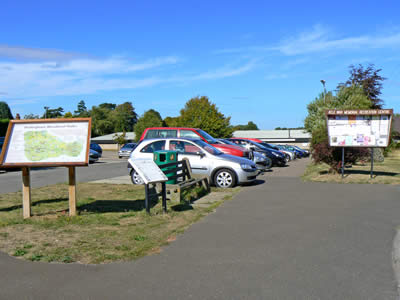
Acle Memorial Recreation Centre Car Park |
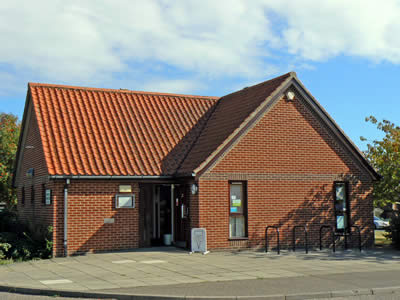
Acle Library |
As you head towards the village green you will see it is surrounded by shops and businesses, many in attractive 17th and 18th century buildings. For example, Calthorpe Cottages are four 18th century cottages named after the Calthorpe family when in the 17th century Henry Calthorpe was Lord of the Manor (now Solicitors) and the 17th century Manor House (now a bed & breakfast). |
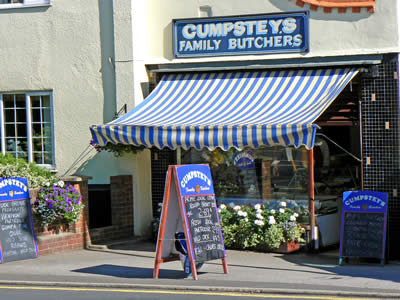
Cumpsteys Butchers |
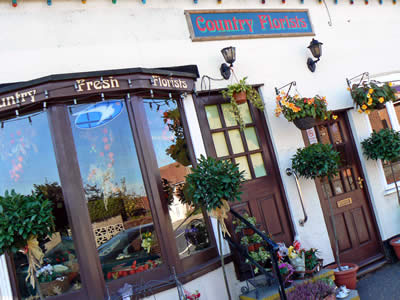
Country Florists |
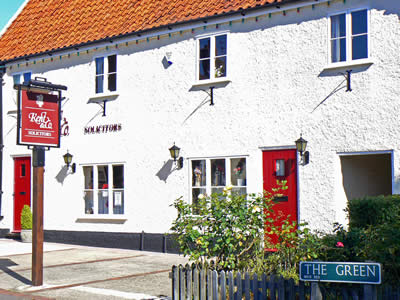
Calthorpe Cottages, named after Henry Calthorpe |
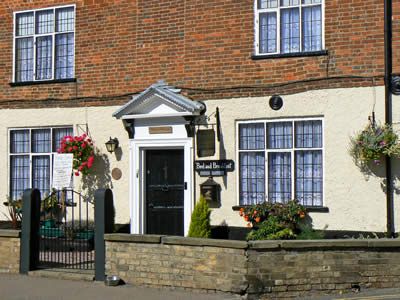
Manor House, dating from the 17th century |
The village green is home to the village sign and the Jubilee Memorial, the later erected to commemorate the Jubilee of Queen Victoria in 1887. Each face shows the distances to nearby places, including Norwich and Great Yarmouth (both exactly 11 miles). The village green was once home to a famous old tree, which is known to have existed at least from 1815. Sadly the old tree had to be cut down in 1979 after it developed Dutch Elm disease. |
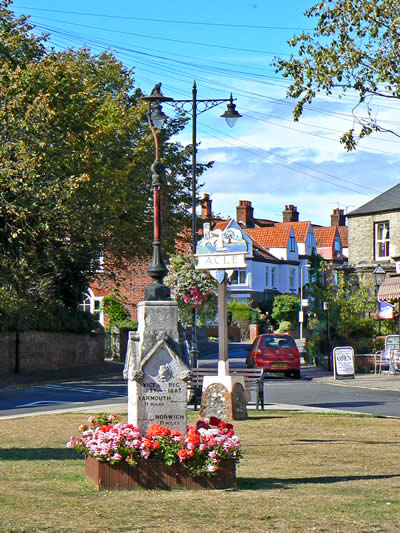
Acle Village Green |
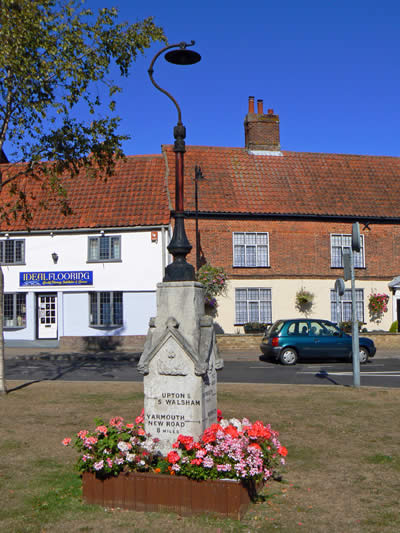
Queen Victoria Jubilee Memorial |
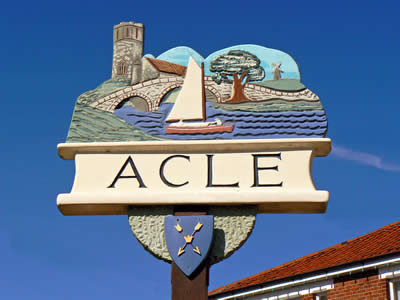
Acle Village Sign, showing the Saxon church tower, the old 3 arch stone bridge and underneath, the arrows of St Edmund |
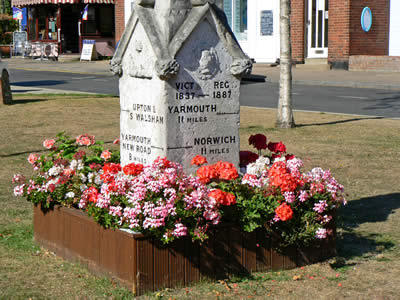
Distance markers on the Jubilee Memorial showing distances to nearby places, such as Norwich and Yarmouth |
The main road running from the village green through Acle is called simply " The Street", which also contains shops, businesses and some 18th and 19th century buildings. Ivy House was originally called the Blue Bell and was once the location for bull baiting (baiting of a bull by dogs) before this became illegal in 1835. Auctions were held in the Queens Head during the 19th century. |
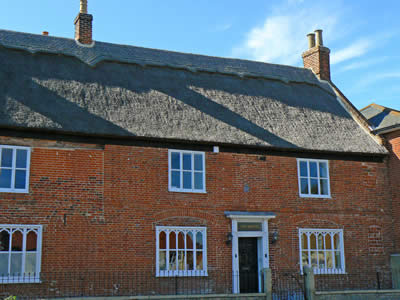
Ivy House |
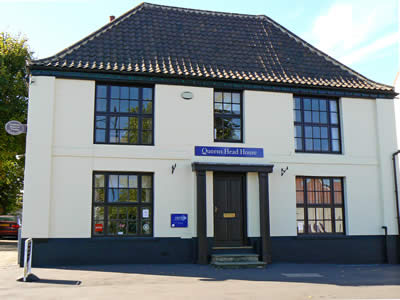
Queens Head |
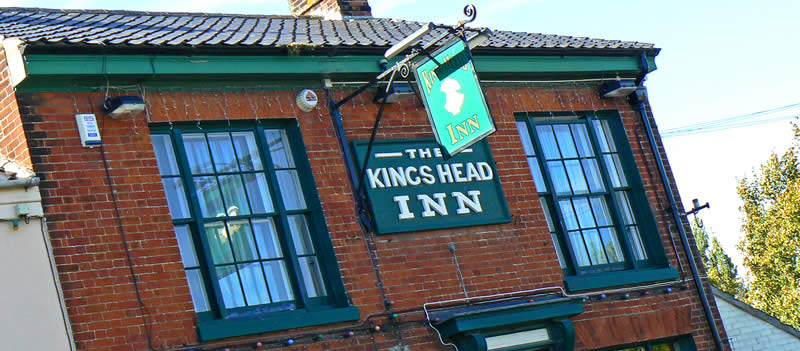
The Kings Head, Acle |
Acle parish church is dedicated to St Edmund, who was king of East Anglia from 855AD (see Southwold Church for the complete story of King Edmund). The church mainly dates from the 13th century, but the round tower is of Saxon origin and pre-dates the rest of the building from about 900AD. In 1912 an inscription was uncovered in the chancel, dating from the 15th century. The inscription gives details of the terrible plague and how quickly it spread. Other highlights of the interior include a 15th century screen, a stone font dating from 1410 and a brass plaque commemorating a long serving priest who died in 1627. |
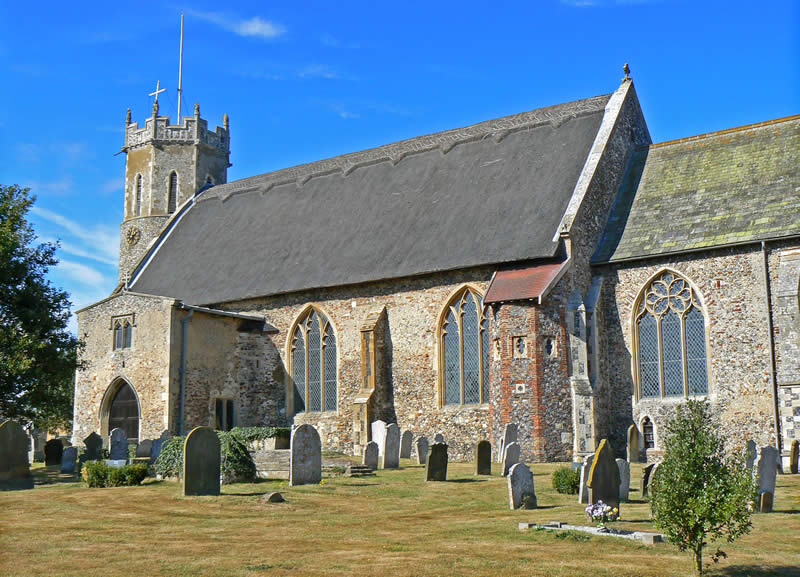
Acle parish church of St Edmund |
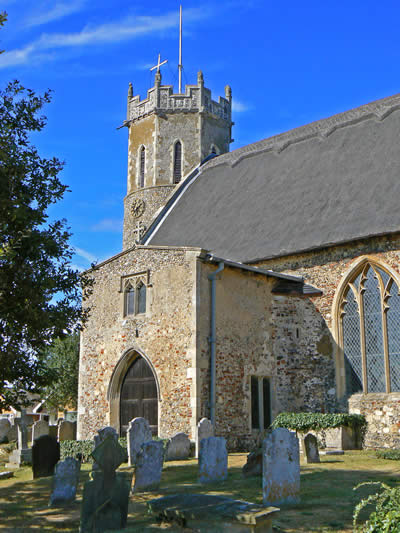
Acle Church Porch |
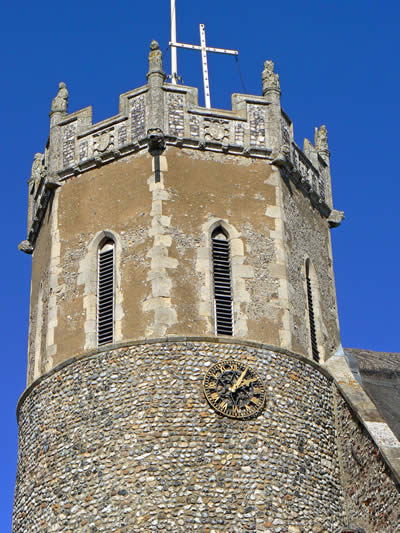
Saxon Round Tower |
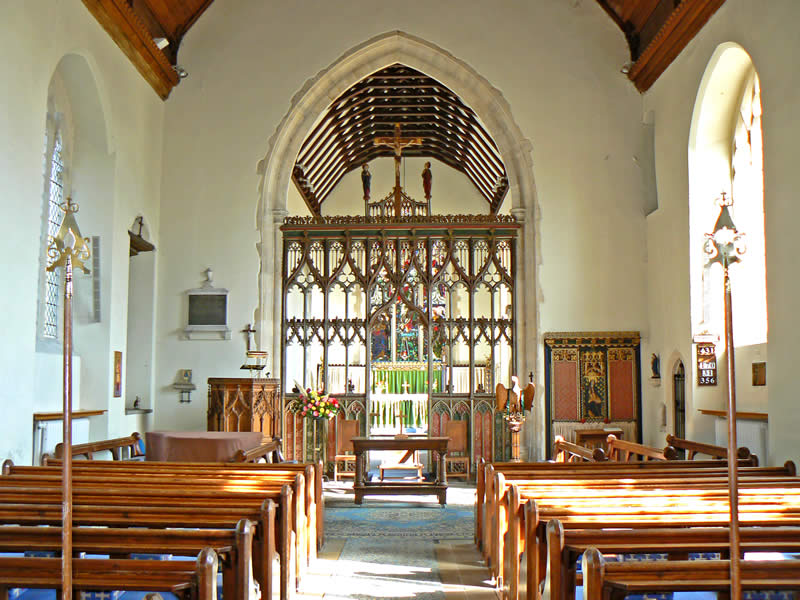
Inside Acle Church |
Finally on your way back to the car park, you may like to stop for a coffee at the local cafe and make sure you don't miss the row of small cottages just up from the cafe, as they used to be the village prison, or Bridewell as they were known back in the 18th century when these cottages were last used to house prisoners! |
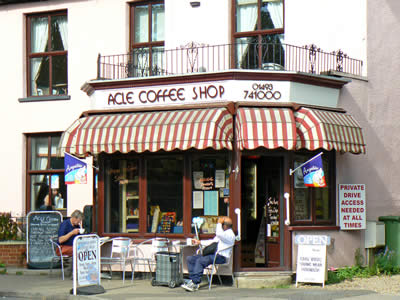
Acle Coffee Shop |
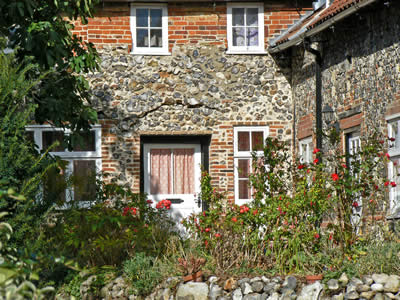
Bridewell Cottages |
Acle Summary of What to SEE and DO
|
 Moor up at the Bridge and enjoy a pub lunch or a walk along the river bank |
 Explore the village centre, green and main street |
 Visit on Thursday morning for the weekly market |
 Explore the ancient parish church |
|
|
Our Verdict
|
Acle is a lovely riverside Norfolk market town, with plenty of historic buildings to admire. The small town also contains plenty of shops and other facilities. |
|
|
|

